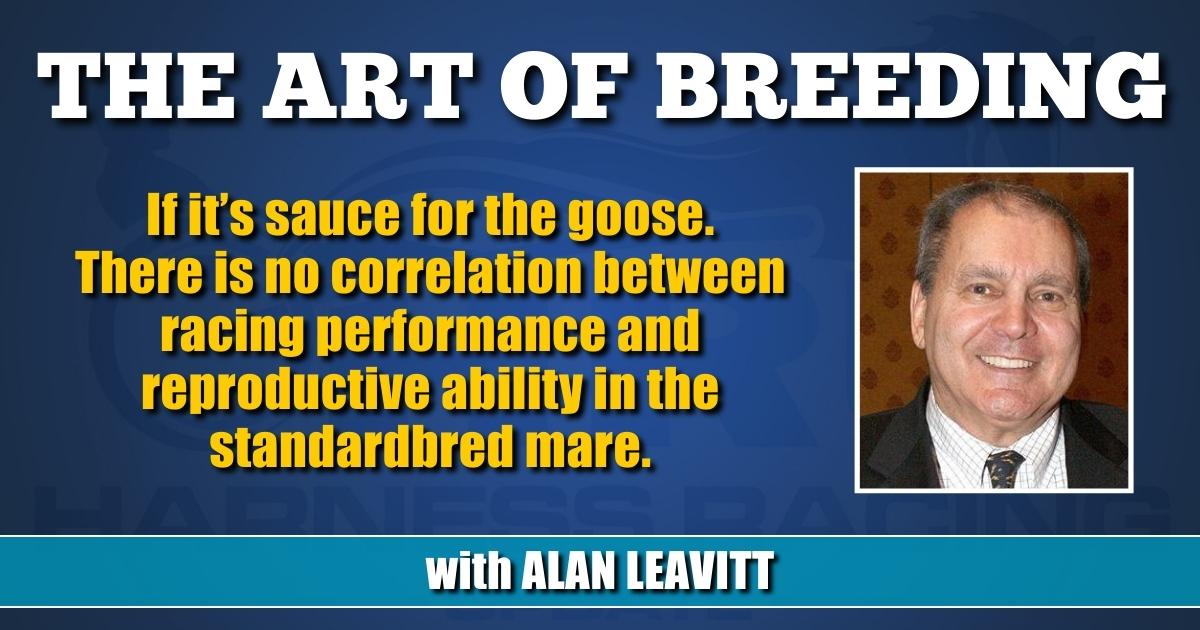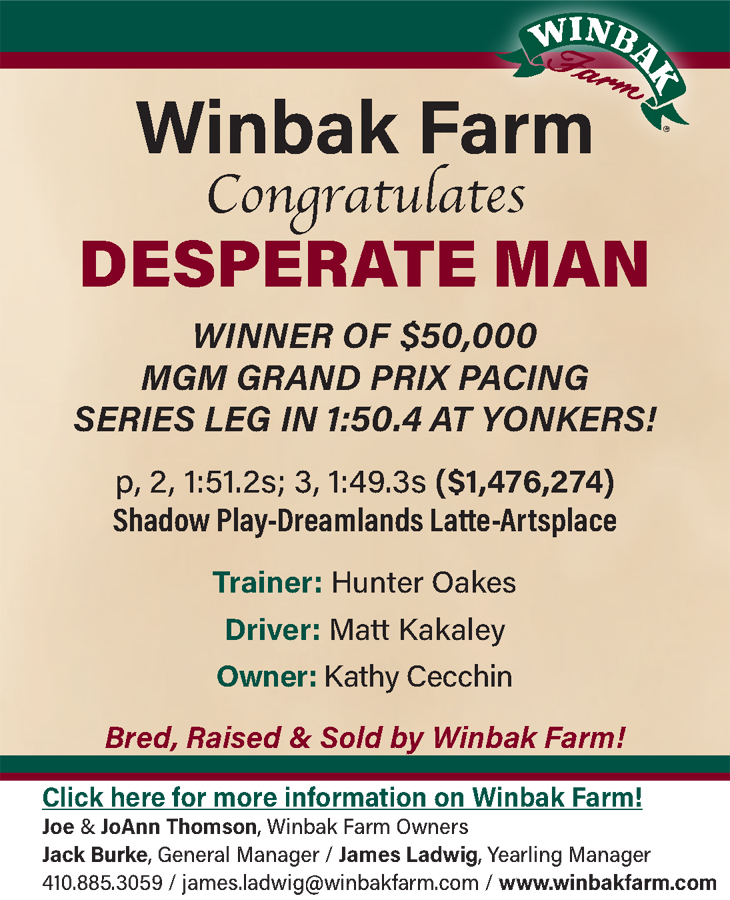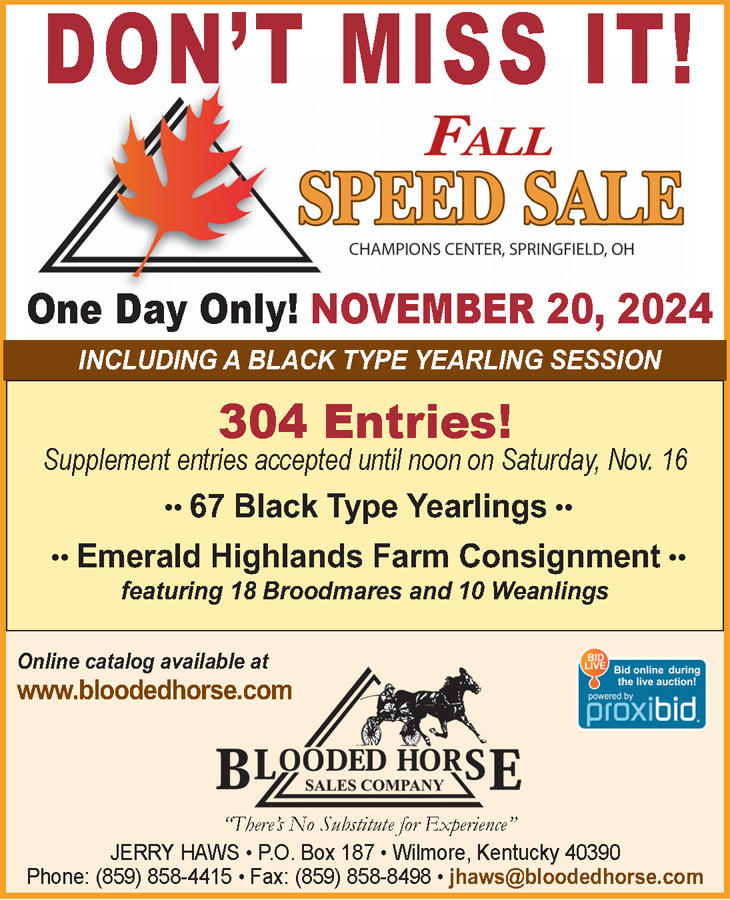If it’s sauce for the goose…
There is no correlation between racing performance and reproductive ability in the standardbred mare.
by Alan Leavitt
The disparity between the phenotype, or visible horse, and the genotype, or invisible genetic makeup, is just as significant in the standardbred mare as it is in the standardbred stallion. Here, things can be simply stated; there is no correlation between racing performance and reproductive ability in the standardbred mare.
While this has been a demonstrable fact down through at least 10 generations of our breed, it still flies in the face of the actual practice of buying and selecting potential broodmares. A top race mare will inevitably fetch a high price when she goes through the sales ring at the end of her racing career. By the same token, the first foal of the same mare will get more than his share of interest at the yearling sale.
In technical terms, this is confusing the phenotype with the genotype. In layman’s terms, it’s the assumption that a top race mare will be an equally good producer of top horses. Alas, that simply is not so.
It should be noted here that there is another premise often in play regarding the public sale of good race mares. That is the acquisition of a “trophy” element, which also involves the public display of wealth. You see this especially in the thoroughbred world. Rich men, or women, frequently pay prices for great thoroughbred race mares that are far beyond any projected practical return, even if the mare should hit.
The principle that supports the purchase of “trophy mares” also applies equally to other areas of human life. Which is why you’ll never see a matrimonial lawyer driving a second hand car. But that is too far afield for a simple horse breeder.
The question remains, however, how do you pick a future broodmare if racing performance is irrelevant? My answer is – buy the family. If a majority of the mares in a mare’s maternal line have produced good horses, odds are at least even this mare will also be a good producer. And when you evaluate a family, you should go right back to the foundation. Even though a mare eight generations back can have no direct influence on her descendants far down the generational line, for me it’s essential that the original spring produced plenty of good water.
I’ve had a perfect example in my own life. Years ago, when Jim Harrison was running Lana Lobell Farms for me, he called one day and said he’d bought a mare.
In Jim’s own words, “I bought a mare today. She isn’t really as well bred as we like, but she was a good race mare on the half-mile track at Buffalo, and the guy took a $12,000 yearling credit for her.”
That mare was Matina Hanover. She herself produced Mack Lobell, regarded by some as the greatest trotter of all time, and through her daughters, granddaughters, and great granddaughters has made an indelible impression on the American trotter.
As to why Jim was not enthused about her breeding, he had her first two dams when he was running Hanover Shoe Farms, and they were nothing special. But her third dam was Miss Bertha Hanover, one of the sisters that were the foundation of the great Hanover broodmare band, and she bred on.
Parenthetically, another legendary matron that Meg and I were blessed to own was Amour Angus. She and Garland Lobell combined to change the entire course of the American trotter with their sons, Andover Hall, Angus Hall, and Conway Hall. And if you trace back Amour Angus’ maternal line, you come to the same Miss Bertha Hanover who appears in Matina Hanover’s pedigree. And it doesn’t hurt repeating that Miss Bertha Hanover and her sisters were the foundation of the great Hanover broodmare band.
Matina Hanover and Amour Angus are not anomalies in that their phenotype, or what was visible to the naked eye, bore no resemblance to their genetic makeup, or genotype. The lesson is clear, and by now you’re probably tired of hearing it again, but if you want to breed good horses, you want mares from good families, regardless of their ability or lack of it on the racetrack.
Stay safe, everybody, and get vaccinated!

















